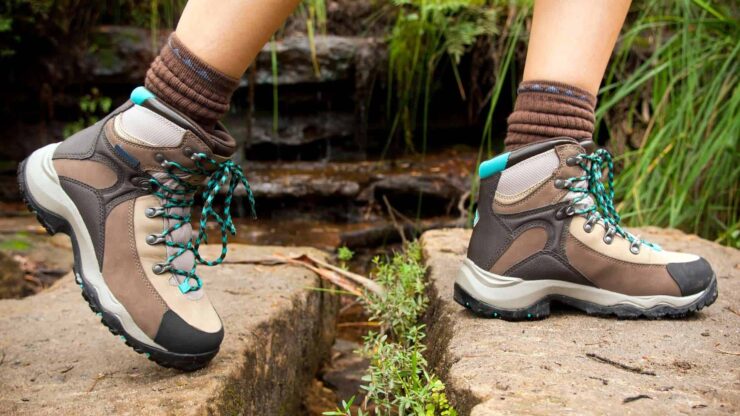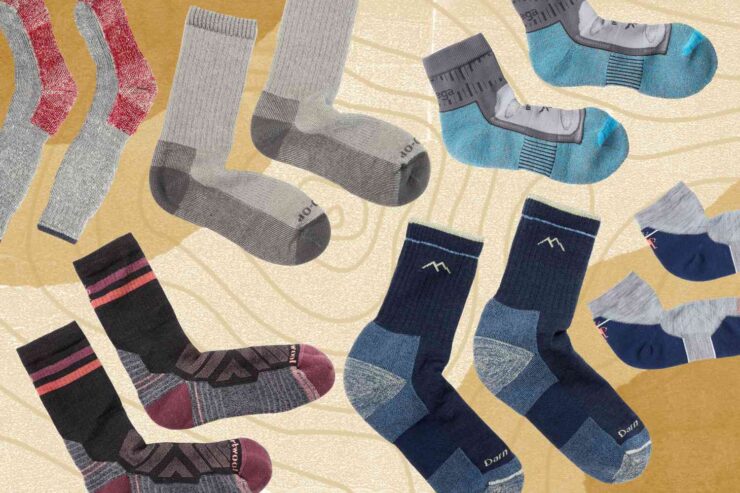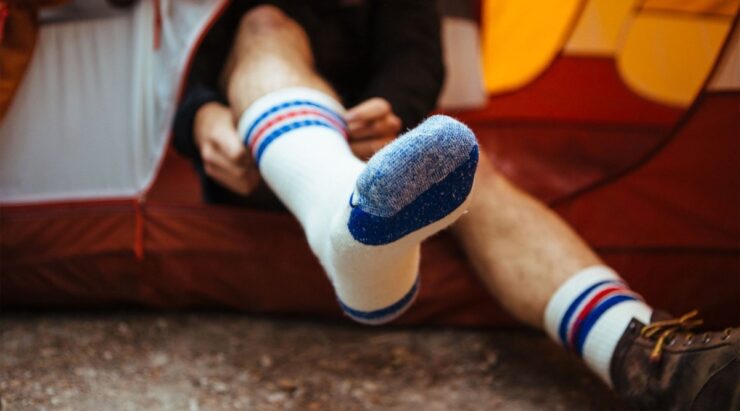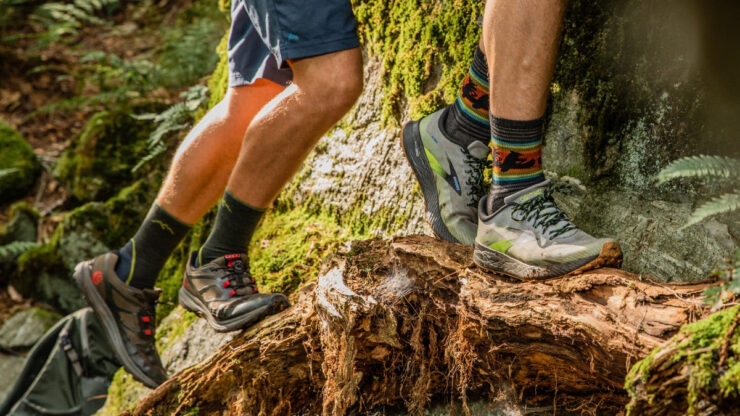Hiking aficionados anxiously await the arrival of summer to embark on fascinating experiences in the vast outdoors. The blistering heat, on the other hand, makes it difficult to keep feet cool, dry, and comfortable on these trips. It is critical to choose the correct socks to avoid blisters, pain, and excessive perspiration. In this article, we will look at the aspects to consider when choosing summer hiking socks, the various fabrics available, and important recommendations to help you combat the heat and enjoy your hiking experiences to the utmost.
Choosing the correct summer hiking socks is an important part of having a comfortable trekking experience, especially during the hotter months, which is why the best ones you can find on this site. Ill-fitting or inappropriate socks can result in blisters, hot spots, and sweaty feet, leading to discomfort and hindering your enjoyment on the trails.
The following factors should be considered when choosing hiking socks for summer adventures:

- Socks with moisture – Wicking properties, such as merino wool or synthetic mixes, should be used. These textiles effectively drain moisture away from the skin, keeping your feet dry and lowering the possibility of blisters.
- Breathability – Choose socks with high breathability. Material mixes featuring mesh panels, such as bamboo, merino wool, or synthetic blends, enhance air circulation and let heat leave, keeping your feet cool and comfortable.
- Cushioning and Support – Hiking socks should provide enough cushioning and support to alleviate the pressure on your feet during long walks. Socks with strategically placed padding in high-stress regions, such as the heel and ball of the foot, should be avoided.
Hiking socks’ material composition is critical to their performance during summer walks. The fabrics listed below are well-known for their moisture-wicking and breathable characteristics:

- Merino Wool – Merino wool socks are well-known for their superior moisture control and temperature regulation. They drain moisture away from your feet, keeping them dry and cool in hot weather. Merino wool is also naturally odour resistant, making it a popular option among hikers.
- Synthetic Blends -Many hiking socks use synthetic fibres such as nylon, polyester, or spandex. These mixes provide great moisture wicking, durability, and short drying periods. For maximum performance, look for socks with a high percentage of synthetic materials.
- Bamboo – Bamboo fibre socks provide exceptional breathability and moisture-wicking characteristics. They are hypoallergenic and antibacterial by nature, keeping your feet fresh and odour-free.
Here are some extra recommendations to consider while purchasing and caring for your summer hiking socks to maximize comfort and performance, which is very important in hiking, especially on difficult and longer paths:

- Proper Fit – Make sure your socks are snug but not too tight or too loose. Socks that are too small might create friction and blisters. Consider the length of your socks as well, based on your preferences and the sort of hiking shoes or boots you’ll be using.
- Layering – Wear a thin liner sock below your hiking socks to help manage moisture and friction. Liner socks provide an extra layer of protection for your feet.
- Construction – To avoid friction and the danger of blisters, look for socks with seamless toe closures.
- Moisture Management – Carry extra socks and change them frequently on multi-day walks to keep your feet dry. Excessive moisture can cause blisters, fungal infections, and pain. You may reduce these dangers and maintain appropriate foot hygiene during your hiking excursion by changing into clean, dry socks.
- Inefficient Temperature Regulation – In hot temperatures, wearing the incorrect socks might interfere with your body’s natural temperature management processes. Breathable socks can retain heat and restrict sufficient ventilation, resulting in overheating. This can cause pain, exhaustion, and even heat-related disorders. Choosing socks with great breathability and moisture-wicking capabilities allows heat to leave and aids in temperature regulation, keeping you cool and comfortable.
- Decreased Performance and Enjoyment – When your feet are unpleasant owing to improper socks, your entire performance and enjoyment on summer treks may suffer. Discomfort, blisters, and excessive perspiration can take your attention away from the natural beauty and restrict your endurance on the trails. The incorrect socks might be the difference between a fun journey and a stressful one.
Choosing the incorrect socks for trekking in hot weather might result in a variety of discomforts and obstacles, but these are easily overcome. What if you wind up with excruciating sensations, skin rips, and bleeding from tightness and chafing? To avoid all of this, we’ve compiled a list of frequent problems you could face:

- Excessive Sweating – In hot and humid weather, unsuitable socks can trap moisture and sweat, fostering the growth of germs and fungus. This can cause unpleasant odours, skin irritation, and an increased risk of blister formation.
- Blisters and Hot Spots – When your feet sweat excessively, along with friction from ill-fitting or non-moisture-wicking socks, the likelihood of blisters and hot patches increases dramatically. Blisters may be very painful and drastically impair your hiking experience.
- Overheating – Overheating can occur when socks lack breathability and moisture-wicking capabilities. Heat can induce discomfort, weariness, and even heat-related disorders including heat exhaustion or heat stroke.
- Poor Foot Support – Socks with insufficient cushioning and support can cause foot strain, especially on long walks in hot weather. You may feel discomfort, pain, or even injury if you do not have sufficient shock absorption and stability, such as arch strain or plantar fasciitis.
Choosing the appropriate socks for your summer hiking activities may make or break your comfort, foot health, and overall enjoyment on the trails. Socks composed of moisture-wicking fabrics, such as merino wool or synthetic mixes, provide great breathability and cushioning. Cotton socks should be avoided since they tend to retain moisture and might aggravate pain in hot temperatures. Additionally, for extra protection, emphasise excellent fit and seamless construction, and consider layering with liner socks. All of this may seem a bit silly and unimportant but those who faced these issues before, know the importance of what we are stating and if you don’t want to battle the heat and have an unforgettable summer hiking experience with happy and healthy feet, investing in the correct socks and following the advice stated in this article might be the way.
Related Posts:
- 20 Best Gaming Headset Under 50$ 2024 - for PC, PS4,…
- Top 10 Best Outdoor Basketball Shoes 2024 - Durable…
- 15 Best Shoes for Jumping Rope 2024 - Maintain a…
- 15 Best Dog Food For Allergies 2024 - Adult, Puppy…
- 15 Best Shoes for Walking on Concrete 2024 - Soft &…
- 10 Best Intermediate Climbing Shoes 2024 - Good for…







